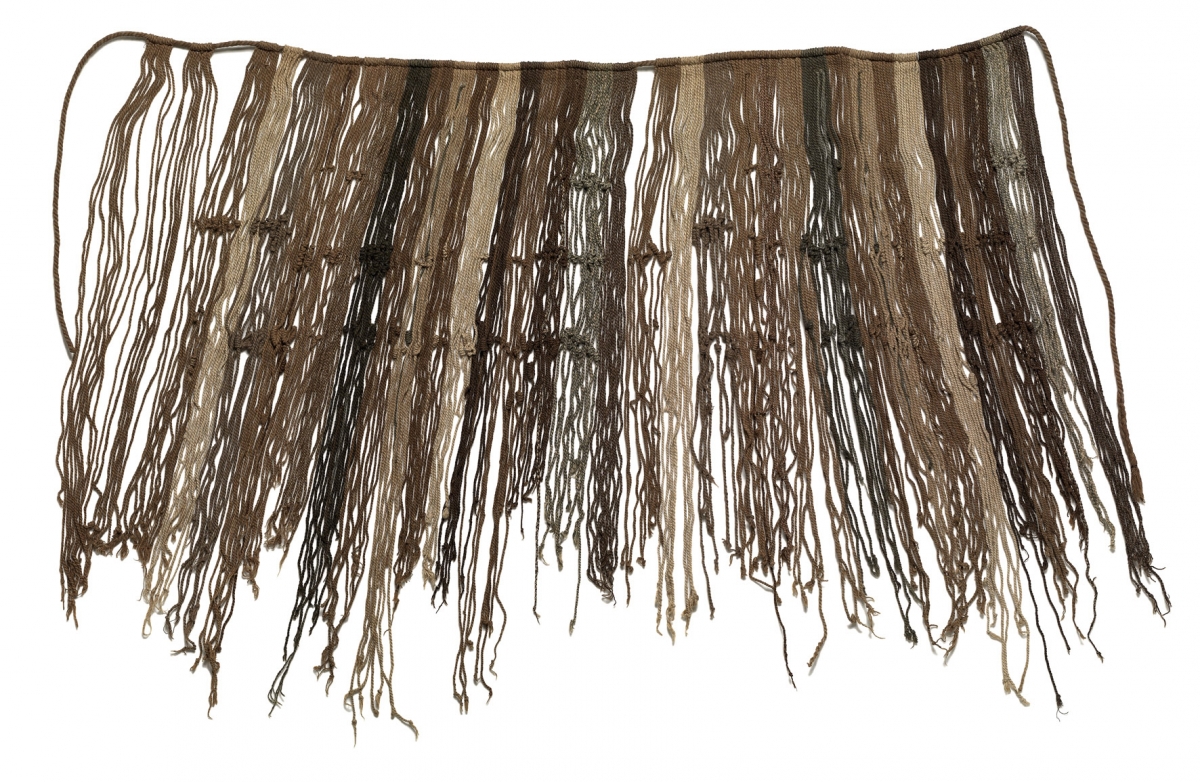- About MAA
- Membership
- MAA Publications
- Periodicals
- Blogs
- MAA Book Series
- MAA Press (an imprint of the AMS)
- MAA Notes
- MAA Reviews
- Mathematical Communication
- Information for Libraries
- Author Resources
- Advertise with MAA
- Meetings
- Competitions
- Programs
- Communities
- MAA Sections
- SIGMAA
- MAA Connect
- Students
- MAA Awards
- Awards Booklets
- Writing Awards
- Teaching Awards
- Service Awards
- Research Awards
- Lecture Awards
- Putnam Competition Individual and Team Winners
- D. E. Shaw Group AMC 8 Awards & Certificates
- Maryam Mirzakhani AMC 10 A Awards & Certificates
- Two Sigma AMC 10 B Awards & Certificates
- Jane Street AMC 12 A Awards & Certificates
- Akamai AMC 12 B Awards & Certificates
- High School Teachers
- News
You are here
Keys to Mathematical Treasure Chests: Andean Khipus
First designated a Convergence Mathematical Treasure in 2008, Andean khipus (also spelled quipus or kipus) are among the most distinctive recordkeeping devices known to scholars from disciplines as varied as history, mathematics, anthropology, and computer science (see Figure 1). For at least 1,000 years (ca 950–1950 CE), Andean peoples used these bunches of knotted strings for recording numerical and non-numerical information. Khipu use is most famously associated with the Inka Empire (ca 1400–1532 CE), whose administrators utilized khipus to maintain accounts of millions of people, as well as—according to some colonial-era chronicles—annals, genealogical records, and songs. The system of base-10 numerical knots on most khipus was only deciphered about one hundred years ago, by the Brooklyn, NY, teacher and historian of mathematics L. Leland Locke (1875–1943) [1923].

Figure 1. Inka-style khipu VA 16148 in the Ethnologisches Museum, Berlin (© Ethnologisches Museum, Staatliche Museen zu Berlin, made available via Creative Commons Attribution-NonCommercial-ShareAlike 4.0 License).
See the online record at https://smb.museum-digital.de/object/28561.
In the century since Locke’s numerical breakthrough, efforts to interpret khipus’ other, potentially non-numerical elements have been pushed forward by scholars with considerable speed. Rubén Urbizagástegui Alvarado [2014] estimated that over 50% of the 800+ khipu-related works published since 1533 CE have emerged in the last 20 years. Such a flurry of activity by researchers around the world, while exciting, has nonetheless rendered it difficult for interested observers to keep pace with the range of theories, hypotheses, and—of particular interest here—the available digital records of khipus themselves.
This article thus endeavors to compile online and open-access resources that offer various entry points into the world of khipu studies. In doing so, I hope to highlight the multiple contributions of works on the khipu published outside of (and in addition to) traditional academic works such as journal articles, monographs, and edited volumes. Readers will also be introduced to a broad diversity of khipu traditions along the way. Indeed, it would be difficult to avoid the variety of locales and styles represented by these objects, given that Inka khipus represent less than 15% of the lifespan of active khipu use in the Andes.
In an effort to reflect the khipu research landscape, I have organized this piece to mirror two of the field’s most well-developed foci:
- the documentation of individual artifacts and collections by museums; and
- quantitative and digital analysis projects that aim to uncover khipus’ undeciphered contents.
I hope to show that each of these is well-represented among existing online resources and can serve teaching and research in diverse ways.
Manuel Medrano (Harvard University), "Keys to Mathematical Treasure Chests: Andean Khipus," Convergence (August 2022), DOI:10.4169/convergence20220801




